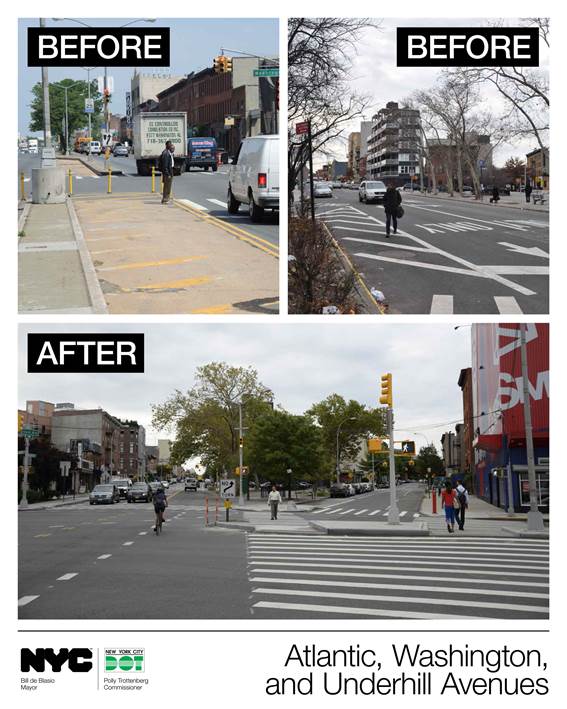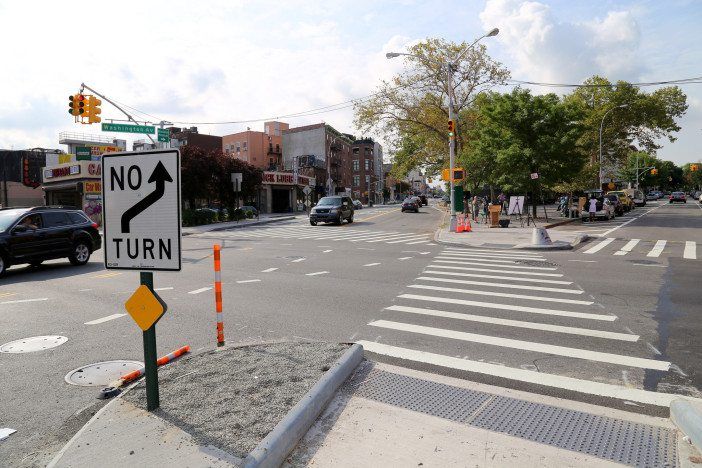Shortened Crosswalks, Left-Turn Signals, And More Pedestrian Safety Changes Come To Clinton Hill Intersection


The next time you’re driving towards the Atlantic-Washington-Underhill Avenues intersection, be prepared for a few changes, now that the city Department of Transportation (DOT) has implemented some long-planned-for changes at the dangerous thoroughfare.

Referred to as the Atlantic-Washington Pedestrian Project, the safety measures are comprised of things like increased pedestrian crossing times, restricted left turns, a left-turn signals, and more:
- Installed shortened crosswalks.
- Built expanded concrete pedestrian space on medians and pedestrian islands.
- Installed leading pedestrian interval signal, allowing pedestrians 15 additional seconds to cross without vehicle conflict.
- Increased pedestrian crossing times.
- Restricted left turn from southbound Washington Avenue to eastbound Atlantic Avenue.
- Installed left turn flashing yellow signal at northbound Washington Avenue.
- Installed new crosswalks across Atlantic Avenue to Lowry Triangle, and along eastern edge of Washington Avenue, reflecting pedestrian desire line.
- Restricted turns from southbound Washington Avenue and westbound Atlantic Avenue to Underhill Avenue, eliminating a confusing vehicle turn.
- Installed new safety bollards to protect pedestrians.
As local business owner and car crash victim John Longo, of Dean Street Restaurant, noted, “I got really lucky [in surviving being hit by a car at the intersection back in December, 2013]. . . And this intersection is a thousand times safer than it was.”
“These are the kind of safety improvements residents are demanding all along the entire length of Atlantic Avenue, along with dedicated bus lanes and bike lanes to protect the most vulnerable users of the street,” added Caroline Samponaro, deputy director of Transportation Alternatives. “For New York City to reach Vision Zero, we need redesigns like these along all of Atlantic Avenue and the other major corridors where most traffic fatalities and serious injuries take place.”
According to DOT data, from 2009-2013, the intersection “had 99 injuries resulting from traffic crashes, with two being severe.”
The Atlantic/Washington Pedestrian Project comes in the wake of implementation of the 2012 Washington Avenue Corridor Project, which restricted eastbound left turns on Atlantic Avenue, installed a southbound left turn bay on Washington Avenue, added concrete islands and median extensions, and expanded the Lowry Triangle using painted gravel and granite blocks.
According to the DOT, the 2012 project was a success, reducing the total number of crashes by 31 percent and the number of pedestrian injuries by 44 percent.




